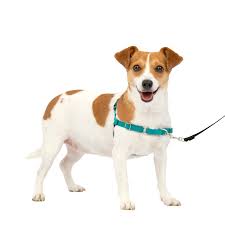When you very own a dog, you know that occurring strolls is crucial. It offers exercising, psychological arousal, and a connecting option between you and the furry buddy. However, when you have a dog that pulls on his or her leash, it can make walks a lot less satisfying and also hazardous. This is when a no-pull harness is available in. In the following paragraphs, we’ll discover all you need to learn about selecting the best no-pull harness for your dog.
1. Comprehending the Several types of Harnesses
The first task when choosing a no pull harness for dogs is knowing the many kinds available. The most frequent sorts are front side clip harnesses, back again clip harnesses, and go halters. Entrance clip harnesses work by fixing the leash to your engagement ring on the front of your torso, which helps to redirect the dog’s consideration and intimidate yanking. Again clip harnesses affix the leash to your engagement ring on the rear of the harness and so are a lot more suited for well-educated dogs. Head halters secure around the snout and function by gently switching the dog’s brain back in your direction, discouraging tugging.
2. Determining Your Dog for the Right Fit
Once you’ve chosen the kind of harness you want, the next task is to determine your dog for the proper suit. Most harnesses may be found in a selection of styles, and it is crucial to obtain the one who properly matches your dog. Look at the circumference of your own dog’s torso and neck area, then refer to the harness’s way of measuring graph to select the appropriate dimensions.
3. Selecting the best Substance
In terms of selecting the best substance for your dog’s harness, it’s important to think about both your dog’s ease and comfort and sturdiness. Nylon and neoprene are well-known alternatives for their ease and comfort and breathability, whilst leather and durable materials like ballistic nylon material are excellent choices for dogs that usually chew or destroy their items.
4. Security Features
Choosing a no-pull harness with security features is crucial to trying to keep your dog secure when walking. Appearance for harnesses with refractive strips, which improve visibility during low-light strolls, and adjustable bands to make sure a secure in shape.
5. Coaching and Encouragement
When a no-pull harness is an excellent tool for discouraging tugging, it is essential to understand that it is not really a cure-all remedy. Correct training and encouragement are needed to aid your dog learn to stroll calmly on a leash. Good encouragement, paired by using a no-pull harness, can be an efficient way to train your dog correct leash manners.
In short:
Purchasing a quality no-pull harness for your dog is essential to earning strolls harmless, pleasurable, and tension-cost-free for you and the furry good friend. By understanding the different types of harnesses offered, gauging your dog for the proper fit, selecting the best substance, and considering safety measures, you can get the right no-pull harness for your dog. Understand that a no-pull harness is just one section of the remedy, and correct training and strengthening are important for long term success. Satisfied wandering!


